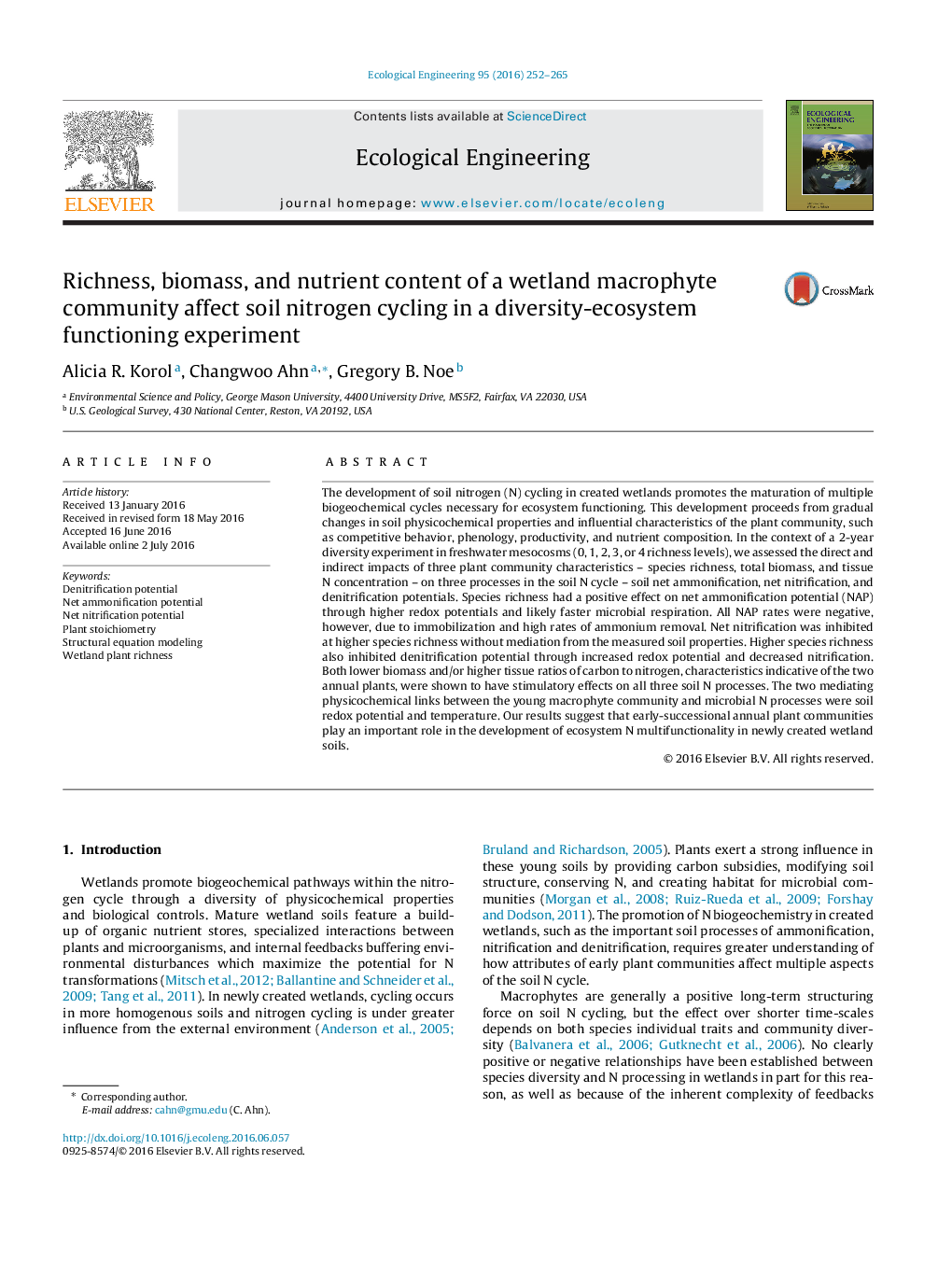| Article ID | Journal | Published Year | Pages | File Type |
|---|---|---|---|---|
| 4388450 | Ecological Engineering | 2016 | 14 Pages |
•A diversity study was conducted in mesocosms with four freshwater wetland plants.•Three potential net rates of nitrogen processes were measured.•Plant richness promoted ammonification and inhibited nitrification and denitrification.•Attributes of annuals, not perennials, facilitated all three nitrogen processes.•Redox potential and temperature mediated plant effects on nitrogen transformations.
The development of soil nitrogen (N) cycling in created wetlands promotes the maturation of multiple biogeochemical cycles necessary for ecosystem functioning. This development proceeds from gradual changes in soil physicochemical properties and influential characteristics of the plant community, such as competitive behavior, phenology, productivity, and nutrient composition. In the context of a 2-year diversity experiment in freshwater mesocosms (0, 1, 2, 3, or 4 richness levels), we assessed the direct and indirect impacts of three plant community characteristics – species richness, total biomass, and tissue N concentration – on three processes in the soil N cycle – soil net ammonification, net nitrification, and denitrification potentials. Species richness had a positive effect on net ammonification potential (NAP) through higher redox potentials and likely faster microbial respiration. All NAP rates were negative, however, due to immobilization and high rates of ammonium removal. Net nitrification was inhibited at higher species richness without mediation from the measured soil properties. Higher species richness also inhibited denitrification potential through increased redox potential and decreased nitrification. Both lower biomass and/or higher tissue ratios of carbon to nitrogen, characteristics indicative of the two annual plants, were shown to have stimulatory effects on all three soil N processes. The two mediating physicochemical links between the young macrophyte community and microbial N processes were soil redox potential and temperature. Our results suggest that early-successional annual plant communities play an important role in the development of ecosystem N multifunctionality in newly created wetland soils.
